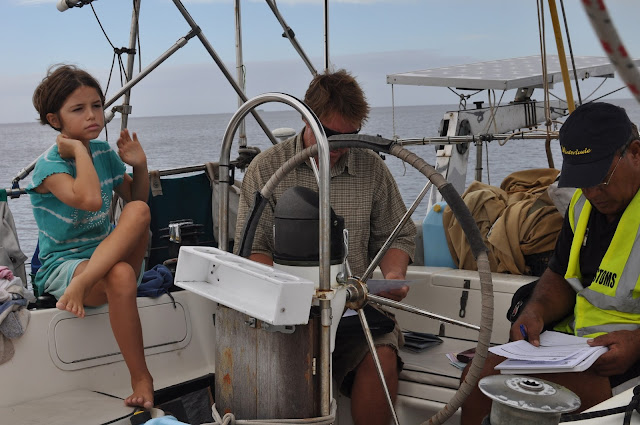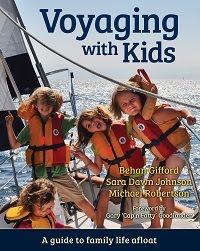UPDATE: Del Viento all good.
As I wrote November 20, we planned to be back in the USA by Christmas to spend time with family (and to work--lots of home improvement projects for Windy's folks). Well, we made it happen. We're here, it's New Years Eve, and our uninsured home is there, afloat on a hurricane mooring in Tonga, January 1. The separation and the distance are more nerve wracking than I anticipated--and there is a hurricane bearing down on Tonga.
We made a calculated decision to do this. However, all calculations involve variables. In this case, we risk-managed against those variables by preparing our boat as best we could. Before leaving we released our primary anchor and all 300 feet of chain onto the bottom and attached them to the two massive concrete blocks and coral anchor down there now. Windy spliced 1.5-inch polypro extensions onto the leads and added as much chafe gear as possible. We attached 300 feet of our 3/4 three-strand rode to separate points on the mooring block and floated those with buoys and secured them to a length of chain dropped a foot off the bow roller. The dodger, bimini, solar panels, halyards, and sails are all removed and stowed. We befriended the best boat minders in the business.
But good preparation can only protect a boat from so much. Luck or misfortune are the other players in this game. We'll find out tomorrow who we're playing against.
Because by tomorrow, cyclone Ula should have passed right over Neiafu (where Del Viento is moored). Her winds are currently 90 knots sustained, and building.
--MR
 |
| Stripped bare and waiting. |
We made a calculated decision to do this. However, all calculations involve variables. In this case, we risk-managed against those variables by preparing our boat as best we could. Before leaving we released our primary anchor and all 300 feet of chain onto the bottom and attached them to the two massive concrete blocks and coral anchor down there now. Windy spliced 1.5-inch polypro extensions onto the leads and added as much chafe gear as possible. We attached 300 feet of our 3/4 three-strand rode to separate points on the mooring block and floated those with buoys and secured them to a length of chain dropped a foot off the bow roller. The dodger, bimini, solar panels, halyards, and sails are all removed and stowed. We befriended the best boat minders in the business.
But good preparation can only protect a boat from so much. Luck or misfortune are the other players in this game. We'll find out tomorrow who we're playing against.
Because by tomorrow, cyclone Ula should have passed right over Neiafu (where Del Viento is moored). Her winds are currently 90 knots sustained, and building.
--MR
 |
| This image was captured 8 hours before this post. The storm is still on-track to pass right over Vava'u. |





























































